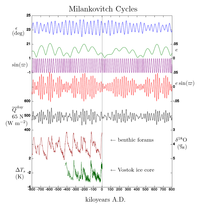
Photo from wikipedia
The narrative and dual-cycle approach conceptualize and operationalize adolescents’ identity formation in different ways. While the narrative approach focuses on the construction of an autobiographical life story, the dual-cycle approach… Click to show full abstract
The narrative and dual-cycle approach conceptualize and operationalize adolescents’ identity formation in different ways. While the narrative approach focuses on the construction of an autobiographical life story, the dual-cycle approach focuses on the formation of identity commitments. Although these approaches have different emphases, they are conceptually complementary. Yet, their empirical links and distinctions have only scarcely been investigated. Empirical knowledge on these links in adolescence and across time has been especially lacking. In the present research, it was therefore examined whether key characteristics of adolescents’ narration (autobiographical reasoning and agency) were concurrently and prospectively related to engagement in the dual-cycle processes of commitment making, identification with commitment, exploration in breadth, exploration in depth, and ruminative exploration. The findings from a cross-sectional sample of 1,580 Dutch adolescents ( M age = 14.7 years, 56% female) demonstrated that autobiographical reasoning was significantly positively associated with the commitment and more adaptive exploration processes (i.e., in breadth and in depth). In addition, agency was significantly positively associated with the commitment processes and exploration in depth. Yet, these associations between the narrative characteristics and dual-cycle processes were only weak. Subsequently, the findings from a two-year longitudinal subsample ( n = 242, M age = 14.7 years, 62% female) indicated that on average commitment strength remained stable but exploration increased across middle adolescence. A stronger increase in identification with commitment and adaptive exploration (i.e., in breadth and in depth) was predicted by a higher degree of agency in adolescents’ narratives. Overall, these findings indicate that both approaches to identity formation are associated, but the small size of these associations suggests that they predominantly capture unique aspects of identity formation. Both approaches could thus complement and inform each other.
Journal Title: Journal of Youth and Adolescence
Year Published: 2019
Link to full text (if available)
Share on Social Media: Sign Up to like & get
recommendations!